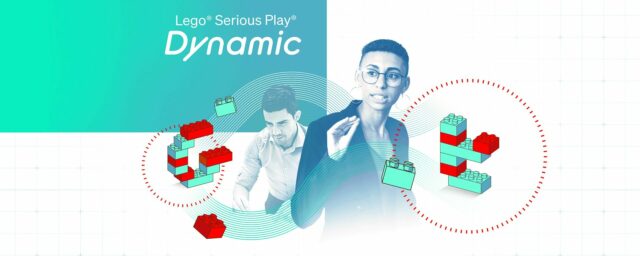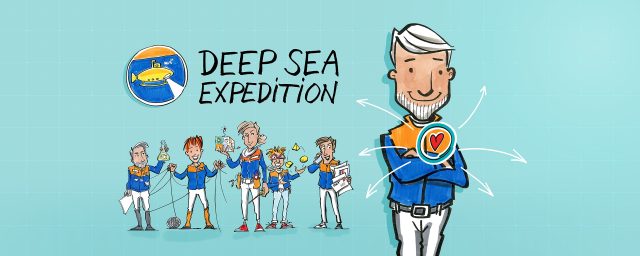all
Agility
agile working
–
agile mindset
–
Scrum
-> How spontaneous and proactive does your team act? How does it deal with sudden changes? How much can your team anticipate processes and how well does it cope with crisis situations? Agile working requires the ability to act flexibly in order to introduce necessary changes. Especially in today’s fast-paced work environment, agility is an important factor for the success of your team.
Analysis
Team analysis
–
Personality analysis
–
Roles in the team
-> Which roles are there in your team? How do the different characters in your team fit together? Where are the strengths and weaknesses of each individual? Our team analysis and the personality tests based on Meyer-Briggs and DISG create clarity about the distribution of roles in the team and provide a detailed overall picture of the team structure.
Change
Change Management
–
Change Processes
-> Changes can be challenging. They require collaboration on many levels and may involve different independent teams within your organization. In change management, you need to establish methods and procedures that enable your team to implement change effectively and profitably. We make change a tangible experience for your team.
Collaboration
networked and collaborative work
–
Hybrid forms of work
–
digital collaboration
-> How well and effectively your team works together on different channels depends on various factors: How good is the communication and information sharing within the team? How high is the level of appreciation and trust among each other? How are tasks divided up according to the strengths of the individual? What is the effective division of labor in face-to-face, hybrid, or digital collaboration?
Communication
Communication & Communication Culture
->
Which communication channels does your team use? Which communicative manners have been established? How efficiently and purposefully do team members communicate with each other? How do you communicate with external stakeholders? Which communication culture is suitable for your team and what is important?
Conflict
Conflict Management
–
Conflicts in the team
–
Dealing with conflicts
-> In the work on common goals conflicts do not stay away. Often, unspoken misunderstandings, disputes over factual issues, divergent values or role conflicts are at the root of the conflicts. In successful conflict management, it is important to develop targeted measures aimed at preventing, de-escalating or spreading a conflict within the team.
Impact
Influence on the organization
-> How does your team achieve relevant influence on the overall organization? How does your team manage to exert a positive influence on the entire organization so that other teams can also benefit from it? The influence your team achieves beyond its own department creates recognition and appreciation as well as positive examples for the complete organization.
Leadership
Management & Leadership
-> What is leadership? What distinguishes management from leadership? Can managers also be leaders and vice versa? Leadership describes the ability to bring about positive change in a team through vision and strategy. Well-applied leadership qualities contribute significantly to the success of your company’s goals and promote a positive working atmosphere.
Onboarding
Welcome to the team
->
How are new employees integrated or trained in your team or company? Which onboarding processes ensure the smooth arrival of new employees? Which aspects are essential for onboarding?
Processes
Processes & Goals
-> What are the process flows like in your company? Which workflows have become established? Which ones still need to be established? The smoother the processes run, the easier it is to achieve the company’s goals.
Psychological safety
Trust
–
Responsibility
–
Feedback
–
Addressing mistakes
……
->
How confident do your team members feel about admitting mistakes, showing vulnerability and insecurities among themselves, or speaking unpleasant truths? How strong is the trust among them? Psychological safety is a key success factor for your team’s efficient collaboration and for the underlying trust relationship among team members.
Responsibility
Achieve commitment
–
Take responsibility
–
Making work meaningful
-> Giving away responsibility is the name of the game when it comes to empowering teams. But how much responsibility does your team take on and how self-determined is work / may work be? Is the commitment among the team members right and how significant are the assigned tasks for the entire company or is the significance of the individual / individual departments for the overall success, sufficiently reflected back.
Team performance
Increase team performance
–
High Performance Team
–
Performance Orientation
-> How ambitious and performance-oriented is your team working together to achieve the best possible result? How willing is each individual to fully contribute to achieving this result? How do normal teams turn into high performance teams? Are there “lacks” in the team that hinder optimal team performance and how can performance be improved?
Vision
Develop visions
–
Communicate visions
–
Making visions tangible
->
The vision holds your team and your company together. It describes the common, positive goal that connects all employees. To what extent is the corporate vision lived out in your team? Are all team members aware of the vision? Can you inspire your team with your vision? How do you communicate the corporate vision? And what can you do to ensure that it remains present in the minds of your team members?
















